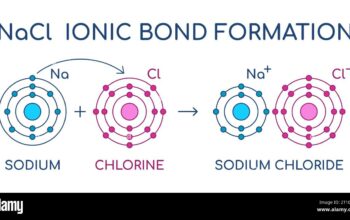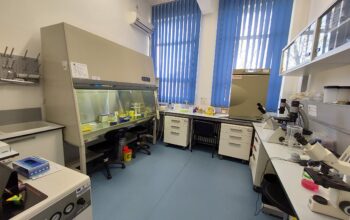In the vast landscape of academic disciplines, where knowledge intersects like the pathways of a complex labyrinth, the relationship between biology and nuclear science may appear tenuous at first glance. Nevertheless, as one delves deeper into the subject, it becomes evident that the roles of these fields are intertwined in fascinating and profound ways. Understanding this interplay is crucial for aspiring nuclear scientists, as the biological implications of nuclear technology and the principles of life sciences enrich the comprehension of nuclear phenomena.
To commence the exploration, consider the essence of nuclear science—a field predominantly concerned with the atomic realm, the forces that govern particles, and the immense energy released during nuclear reactions. It operates at the very foundations of matter, analyzing interactions that may seem remote from the biological processes that underpin life itself. However, likening nuclear science to a powerful river flowing through varied terrains, the elements of biology form tributaries that add depth and complexity to this intellectual ecosystem. By studying biology, a student of nuclear science gains invaluable insights that can influence their work profoundly.
**The Confluence of Biology and Nuclear Science**
The interaction between nuclear science and biology is primarily manifested in the realm of radiation biology. This discipline examines the ramifications of ionizing radiation on living organisms, encompassing cellular damage, mutation, and the mechanisms of biological repair. As nuclear reactions release radiation, understanding its biological impact becomes imperative not only for the development of nuclear technologies but also for mitigating potential hazards associated with them. Thus, a robust grounding in biological principles is essential for nuclear scientists, ensuring they can navigate the delicate balance between harnessing energy and safeguarding life.
In this light, the principles of genetics offer a compelling example of how biology enriches nuclear science. Nuclear scientists often employ techniques derived from genetic research, such as gene editing and CRISPR technology, to explore nuclear stability and its effects on biological organisms. By dissecting the genetic underpinnings of radiation responses, researchers can innovate in areas like cancer treatment, where radiation therapy is a common therapeutic approach. The synthesis of genetic insights with nuclear science not only enhances treatment efficacy but also elucidates the mechanisms through which radiation influences organisms at a molecular level.
**The Importance of Interdisciplinary Perspectives**
Further, the interdisciplinary approach is pivotal in addressing contemporary global challenges. For instance, climate change and energy sustainability stand as formidable issues demanding multifaceted solutions. The fusion of biological knowledge with nuclear science offers innovative avenues to improve renewable energy technologies, reduce emissions, and develop safer nuclear reactors. Bioremediation, for example, harnesses biological agents to mitigate the environmental fallout of nuclear accidents, showcasing an intersection where biological principles hold profound significance in nuclear science applications.
The ethical dimensions inherent in nuclear science also warrant a discussion informed by biology. The consequences of nuclear technologies—ranging from environmental degradation to public health concerns—demand a nuanced understanding of biological systems. For instance, the implications of long-lived radioactive isotopes on ecological health necessitate a comprehensive exploration of how these substances interact with various biological components, from microflora to human populations. Here, biological knowledge serves as a cornerstone for informed decision-making, promoting responsible stewardship of nuclear advancements.
**Biological Models and Nuclear Innovations**
In the innovative realm of nuclear science, biological models have proven indispensable. Research into the mechanisms of organisms that exhibit remarkable resilience to radiation, such as certain extremophiles, can elucidate potential avenues for enhancing radioprotection in humans. These findings underline the symbiotic relationship between biology and nuclear science, illustrating how biological systems can inform and inspire advancements in nuclear technology.
A pertinent case study emerges from the investigation of biosynthesis of radioactive isotopes within living organisms. Certain microbial species can uptake and process radioactive materials, which raises questions about utilizing these unique properties in various applications, from waste management to bioremediation. Moreover, advancing biomimetic approaches can lead to the design of novel materials and processes that incorporate biological efficacy in the field of nuclear technology. Such explorations highlight the value of biological acumen in pioneering new avenues within nuclear science.
**Navigating the Future: Challenges and Opportunities**
Looking to the future, the confluence of biology and nuclear science presents both challenges and opportunities. Students and researchers must grapple with the consequences of emerging technologies, such as the ethical considerations surrounding genetic manipulation and the societal implications of nuclear energy expansion. An understanding rooted in both biological principles and nuclear science is paramount for navigating these complexities and ensuring responsible innovation.
In conclusion, the inquiry into whether biology is essential for pursuing nuclear science unravels a tapestry of connectivity between these disciplines. Like the intertwined branches of a carefully nurtured tree, the interplay between biology and nuclear science fosters growth, understanding, and innovation. This partnership is not merely advantageous; it is imperative for those who aspire to advance the frontiers of nuclear technology while maintaining a vigilant regard for the intricate web of life. The future of nuclear science, enriched by biological insights, promises to illuminate new spheres of knowledge and application, compelling students to embrace the intricacies of both fields. By fostering this interrelationship, the next generation of nuclear scientists will be exceptionally equipped to face the challenges and opportunities that lie ahead.












